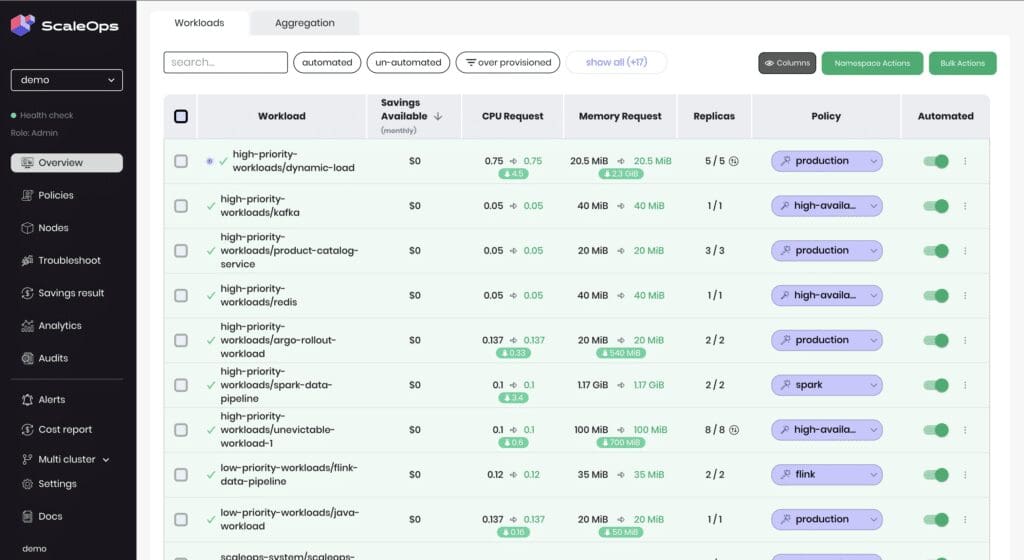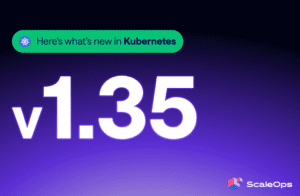In the ever-evolving world of Kubernetes, managing cross-availability zone (AZ) traffic is crucial for optimizing both performance and cost. Cross-AZ traffic can lead to increased latency and higher costs, affecting the efficiency of your applications. This blog will delve into practical strategies to minimize cross-AZ traffic, using real data, charts, and examples to illustrate these points effectively.
Understanding Cross-Availability Zone Traffic
Cross-availability zone traffic occurs when data transfer happens between different AZs within the same region. While Kubernetes clusters are designed to be resilient by spreading workloads across multiple AZs, this can inadvertently lead to significant inter-AZ communication, especially in data-intensive applications.
Why Reducing Cross-AZ Traffic Matters
- Cost Efficiency: Cloud providers charge for data transfer between AZs. Minimizing this traffic can lead to substantial cost savings.
- Latency Reduction: Data transfer between AZs introduces latency, impacting the performance of latency-sensitive applications.
- Improved Application Performance: Reduced cross-AZ traffic ensures that data access and services are quicker, leading to better overall application performance.
Strategies to Minimize Cross-AZ Traffic
1. Intelligent Node Placement
Leveraging node affinity and anti-affinity rules can significantly reduce cross-AZ traffic. By defining these rules, you can control the placement of pods in specific zones, ensuring that related pods are co-located within the same AZ
apiVersion: v1
kind: Pod
metadata:
name: example-pod
spec:
affinity:
podAffinity:
requiredDuringSchedulingIgnoredDuringExecution:
- labelSelector:
matchExpressions:
- key: app
operator: In
values:
- web
topologyKey: "kubernetes.io/hostname"In this example, the pod affinity ensures that pods with the same label web are scheduled on the same node, thereby reducing inter-AZ communication.
2. Topology Aware Routing
Topology Aware Routing allows Kubernetes services to route traffic based on the topology of the cluster, including AZs or regions. By ensuring that requests from a pod are routed to a service endpoint within the same availability zone, cross-AZ traffic is minimized. This not only improves the performance by reducing latency but also decreases inter-AZ data transfer costs, which can be significant in cloud environments. The feature utilizes Kubernetes’ built-in topology labels and node affinities to make intelligent routing decisions, ensuring that traffic is localized within the same zone wherever possible, thus optimizing both cost and performance.
3. Local Persistent Volumes
Using local persistent volumes (PVs) ensures that data stays within the same AZ as the pod accessing it. This strategy is especially effective for stateful applications where data locality is critical.
apiVersion: v1
kind: PersistentVolume
metadata:
name: local-pv
spec:
capacity:
storage: 100Gi
volumeMode: Filesystem
accessModes:
- ReadWriteOnce
persistentVolumeReclaimPolicy: Delete
storageClassName: local-storage
local:
path: /mnt/disks/ssd1
nodeAffinity:
required:
nodeSelectorTerms:
- matchExpressions:
- key: kubernetes.io/hostname
operator: In
values:
- node-14. Pod Topology Spread Constraints
Pod topology spread constraints allow you to define how pods should be spread across nodes and zones to minimize cross-AZ traffic. This feature ensures even distribution of pods, reducing the likelihood of inter-AZ communication.
apiVersion: v1
kind: Deployment
metadata:
name: example-deployment
spec:
replicas: 6
selector:
matchLabels:
app: example
template:
metadata:
labels:
app: example
spec:
topologySpreadConstraints:
- maxSkew: 1
topologyKey: topology.kubernetes.io/zone
whenUnsatisfiable: DoNotSchedule
labelSelector:
matchLabels:
app: example
containers:
- name: example-container
image: nginxConclusion
Minimizing cross-availability zone traffic is a crucial aspect of optimizing your Kubernetes cluster for performance and cost-efficiency. By implementing intelligent node scheduling, using local persistent volumes, and leveraging pod topology spread constraints, you can significantly reduce cross-AZ traffic.
Ready to take your Kubernetes cluster to the next level? Visit ScaleOps to discover advanced solutions for optimizing your cloud infrastructure.
























